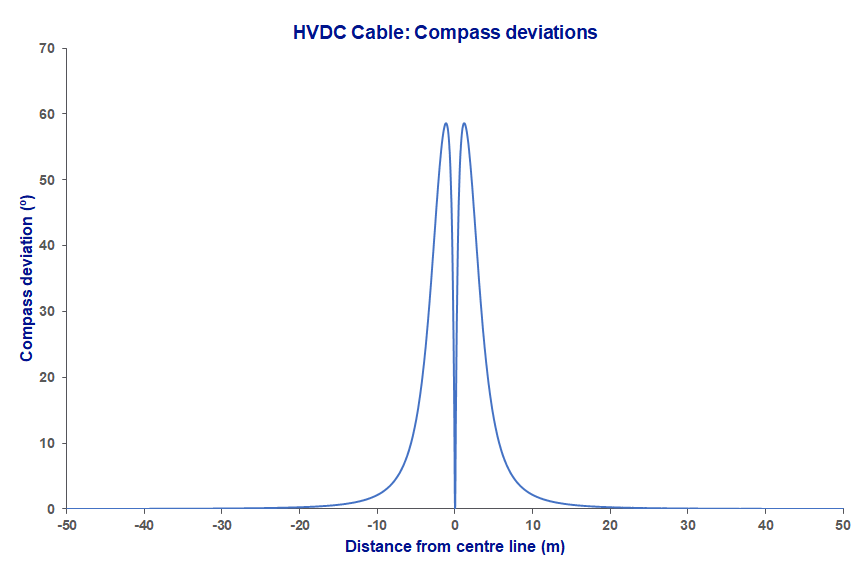Interconnectors and Direct Current cables
This website focuses on the 50 Hz fields that are produced by Alternating Current (AC) power systems because in the UK, at present, Direct Current (DC) is not extensively used onshore. However, more and more interconnectors and offshore transmission links which operate using DC technology are being proposed, where associated infrastructure will be located onshore.
This page summarises how static fields are produced.
Natural static fields
The Earth's static magnetic field varies over the surface of the globe and is approximately 50 µT in the UK.
The Earth's static electric field is normally around 100 V/m but can vary greatly in different weather conditions, for example in thunderstorms.
Static fields from power systems
A DC overhead line produces both electric and magnetic fields. The electric field close to the ground varies, as it is affected by the corona ions that are typically produced on the surface of the conductors, and they depend on weather conditions.
There are currently no DC overhead lines in the UK. If one is proposed, this page will be updated to include graphs showing the fields produced.
Underground cables are always covered by a metal sheath which screens the electric field, so an underground cable only produces magnetic fields. So far in the UK, all DC connections have been underground, to connect a subsea cable coming ashore to the convertor station where it joins the main AC power network.
For a typical design of underground cable, the maximum field it could produce at 1 m above ground is approximately 50 µT and this decreases rapidly to the sides of the cable. This DC field from the cable can either add to or subtract from the Earth’s field depending on the relative directions. So, close to the cable route, the DC magnetic field that would be experienced would be altered by the cable. At distances beyond approximately 15 m, the field from the cable would be below 1 µT and would make little difference to the Earth’s field.
The typical static magnetic fields produced by underground cables are shown in the graph. These calculations are for a typical design of cable which would be used in the UK to connect an undersea cable to the convertor station. This design has two cores, spaced 0.5 m, 1 m deep, carrying 2000 A at +/- 500 kV.
The bottom blue line is the magnetic field from the cable alone. The top yellow line is how the magnetic field combines with the Earth’s geomagnetic field, adding directly on top and making the magnetic field smaller to the sides, until it reaches a background level of approximately 50 µT (demonstrated by the black dashed line). This change to the Earth's magnetic field can affect compasses if you are very close to the cables, which is discussed below.

The convertor stations at the ends of the DC cable, where it connects to the main AC transmission system, produce both DC and AC fields. These are very short range – normally the field beyond the perimeter fence is dominated by the overhead lines or underground cables entering the convertor station, not by the equipment within it.
DC underground cables produce a static magnetic field. Because the magnetic field from the cable alters the Earth’s magnetic field, there is an effect on magnetic compasses close to the cable – they can point in the wrong direction. This can be an issue for ships at sea but very rarely causes problems on land, partly because the effect is localised – it only occurs within approximately 10 m of the cable itself.
The following graph shows the size (not the direction) of compass deviation for a typical cable. The compass deviation depends on the direction of the cable. This graph is for a north-south cable, which produces the largest deviation. If a cable is laying in an east-west direction, it has no effect on a compass.
